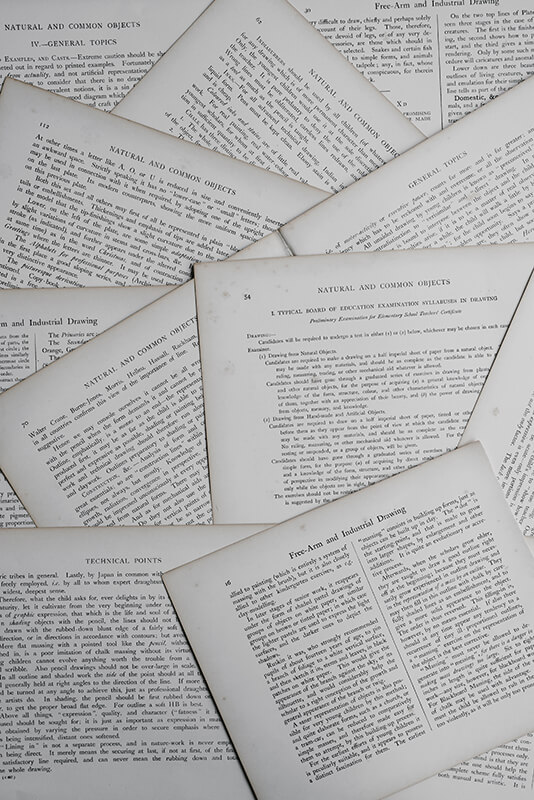
What is APA Style Formatting and How To Do It Right
 What is APA format and why is it used? If you’ve ever had a writing assignment in school, you’ve probably heard of the APA format before. In this blog, we’ll tell you all you need to know about the APA writing style, how to do APA format, and give you the APA meaning and examples! You’ll learn what APA stands for and why it sets the highest standards for academic writing that are now taught in schools.
What is APA format and why is it used? If you’ve ever had a writing assignment in school, you’ve probably heard of the APA format before. In this blog, we’ll tell you all you need to know about the APA writing style, how to do APA format, and give you the APA meaning and examples! You’ll learn what APA stands for and why it sets the highest standards for academic writing that are now taught in schools.

What Is APA?
So what exactly does “APA” stand for and why do they get to dictate a writing format for schools worldwide? APA stands for American Psychological Association. The organization has about 146,000 members composed of researchers, consultants, clinicians, educators, and students. The association is basically the largest organization of professional and scientific psychologists in the United States and has its headquarters in Washington, D.C. The association upholds the importance of research methods hence putting emphasis on proper citations for published scientific researchers.
The APA’s mission is to improve society through applying psychological science and knowledge and promoting its advancement and communication. The association is able to do this through their four tenets:
● Creating a positive impact on critical societal issues by utilizing psychology
● Elevating the public’s knowledge and perception of psychology
● Preparing the future of psychology as a profession and discipline
● Strengthening the association’s mission to be an authoritative voice in psychology
In education, the APA style meaning refers to the documentation of sources used in written research and is used and developed by the same organization it is named after. The APA style form is used for research papers about social sciences such as psychology, sociology, anthropology, and even other educational disciplines.
What is APA format and why is it the standard?
The Colorado State University System perfectly explains what is APA style and why academics “speak” in APA. Since its foundation in 1892 at Clark University, the APA has created the universal language understood by academics globally. Because of this, the APA style citation has become the standard in higher education when it comes to citing sources properly.
Being able to properly cite your sources in a research paper following the APA style format automatically gives a writer credibility. Despite the APA style being universally used, it can be quite difficult to master because of the many nuances in academia.
For the most part, learning what is APA in research specifically is important for consistency. The American Psychological Association successfully created a consistent format academics can use whenever they write. Consistency in this regard refers to the format of the page and the way sources are cited in the research paper. Following the APA style format trains students to give credit where it’s due. By learning the APA format, students understand that even their own research papers eventually become part of the larger body of knowledge. Once a student publishes their own research, it can even be part of more studies done in the future.

How Do You Write A Paper In APA Format?
In learning what is APA style format, it’s important to understand it’s not as simple as making proper citations and following a specific format. There are three levels to the APA style that makes the guidelines easier to understand since the full Publication Manual is approximately 300 pages long and is now on its 7th edition. One thing that makes following the APA format tricky is that it’s constantly evolving which is why researchers, writers, and students must always be up to date with the latest edition.
The First Level: Organization
If you want to learn what is APA format for a paper, for empirical research reports, following the APA format means having these distinct sections in this order:
● Title Page: The first page of the research paper contains the title of your research, the names of the researchers, and their affiliations. Usually, for a research paper done for school, it’ll contain your institutional affiliation.
● Abstract: The abstract is the next page which contains the summary or the overview of your study that prepares the reader.
● Introduction The introduction page provides historical background, cites previous relevant research sources, and explains the rationale for the research or study.
● Method The methodology part of the study explains how the study was conducted whether through qualitative or quantitative methods or both.
● Results The results page describes the specific findings and data gathered from the experiment.
● Discussion A large part of the body of an empirical research report discusses the overall research method, findings, and implications of the study,
● References The references section is a comprehensive list of all the sources used throughout the research paper which is vital as well in an APA-style format paper.
Not only are these distinct sections found in research papers following the APA format, but it’s also a basic standard for any type of academic writing. Learning what is APA is important for any student and we encourage you to learn it through and through. If you do need help though, Homework Help Canada has amazing editing and plagiarism-checking services available that will really set your research apart.

The Second Level: High-Level Style
Found in Chapter 3 of the Publication Manual under “Writing Clearly and Concisely”, the APA style format follows a formal rather than informal use of language. This means writing in a tone that corresponds with the level of appropriateness and professionalism used when speaking with academic colleagues. Formal language means no use of slang, pop culture references, humor, and the like that are normally used in informal conversational settings. By doing this, the likelihood of your study being understood, widely accepted, and read by other academics is magnified.
Besides formality, the high-level APA style also highlights straightforwardness. Ideas must be communicated as simply and as clearly as possible. Literary devices like idioms, metaphors, similes, ironies, and the like are not needed for research papers that follow an APA format. Simply put, high-level style writing is purely technical and not creative. A tip for following the high-level style is to keep sentences concise and direct.
Finally, the high-level APA style encourages the use of “politically correct” terminology that doesn’t alienate groups of people who are mostly minorities. Following the high-level APA style means not showing any bias, avoiding offensive language, using gender-neutral terms, being specific, and avoiding the objectification of the research participants.
The Third Level: Low-Level Style
The last level, covered in Chapter 4 of the Publication Manual as “Reference Examples” talks about the specific guidelines to follow in regard to spelling, grammar, numbers, statistics, references, and citations. There are many “low-level” guidelines that can be overlooked and even professional writers seek confirmation from the Publication Manual. Here are 10 of the most common APA style errors and how you can avoid them.
1. Use of numbers
Similar to the technical rule in writing for most publications, the APA style rule for numbers is spelling out the words for numbers below 10 and using figures for numbers over 10.
2. Hyphenation
Compound adjectives that precede a noun should be hyphenated as it’s the rule for APA format.
3. Use of “et. al.”
The use of “et. al.” which means “and others” is a defining feature when writing in APA style. Because APA style follows in-text citation, whenever you cite a source that has more than three authors, you can shorten the reference by only adding the last name of the first author and then using “et al” and then the year of publication.
For example, the journal article you want to cite is entitled “International Trust and Public Opinion About World Affairs” by the authors, Paul R. Brewer, Kimberly Gross, Sean Aday, and Lars Willnat. The way you would reference the article and the authors through in-text citation following APA style format is:
“In ‘International Trust and Public Opinion About World Affairs, Brewer et. al. (2014), found evidence that American citizens are pessimistic about their country trusting other nations.”
4. Headings
There are many rules and sub-rules for headings. Headings should use the correct capitalization and casing.
5. Use of the word “since”
APA style is quite specific with the usage of “since”. Formal writing encourages conciseness. Make sure you aren’t using the word “since” in place of “because”.
6. Tables and figures
There are also specific rules for tables and figures in APA style and you have to double-check always. For the most part, it asks you not to be redundant. The data shown in your tables and figures shouldn’t be redundant with the data found in your text.
7. Proper use of commas
In APA style, following the rule of the oxford comma is strongly recommended.
8. Abbreviations
A rule in APA style formatting is spelling out a term that completely precedes the use of its abbreviation.
9. Spacing
Another defining characteristic of a research paper following an APA style format is the use of double spacing between sentences.
10. Use of “&”
The basic rule for differentiating “&” and the word “and” is using “&” in the text and using the word “and” in parentheses.

How Do You Cite References In APA Format?
Yes, there are many guidelines to the APA format. Even down to the citations, the way it’s written in the text varies depending on the source that is being referenced. You’ll see in this section how to make sure you’re making the right in text citations based on whether you got your information from a book, journal, or article.
But first, what is APA citation? The American Psychological Association emphasizes the importance of giving credit to science and research. Most scientific studies and the knowledge gained from them are born out of large collaborations between researchers. For their work to be properly acknowledged, an extensive and detailed set of rules for citations was established.
Citations are mostly important because it allows writers and researchers to reference others’ work without it being plagiarized. It acknowledges that a writer’s trail of thought is highly influenced by another’s original thought. If there’s one thing more universal than the APA format, it’s that plagiarism will always be unacceptable. Proper citations allow us to share similar ideas with those that came before us and give them the proper credit.
If you want to learn more about how to avoid plagiarism and how to cite sources properly, watch a previous episode of The Homework Help Show here.
The Reference List
At the end of any academic writing that follows the APA style format, whether it’s an article, a journal, or even a paper, there’s always a reference list found. The reference list contains all the cited works found in the text.
The format of the reference list begins with the heading that simply states “references” and is centered at the top of the page. The references are listed alphabetically following the name of the first author in the citation.
You might also want to learn when it is appropriate and when you should reference something in your work. To learn more, read our past blog on understanding when to reference.

Where To Get References
According to APA Style, there are more than 100 reference examples listed in the most recent version of the Publication Manual now in its seventh edition. Here are some of the most common categories and examples:
Textual Works
● Periodicals
● Journal Articles
● Magazine Articles
● Newspaper Articles
● Blog Posts and Comments
● Up-to-date Articles
● Books and Reference Works
● Books or E-books
● Diagnostic Manuals
● Children’s or Illustrated Books
● Classroom Course Pack Material
● Religious Work
● Edited Book Chapters and Entries in Reference Works
● Chapter in an edited book or E-book
● Dictionary Entry
● Wikipedia Entries
● Reports and Gray Literatures
● Report by a Government Agency
● Report with Individual Authors
● Brochures
● Ethics Code
● Fact Sheets
● ISO Standards
● Press Releases
● White Papers
● Conference Presentations and Proceedings
● Conference Presentations
● Conference Proceedings
● Dissertations and Theses
● Published Dissertation or Theses
● Unpublished Dissertation or Theses
● Unpublished and Informally Published Works
● ERIC Database
● Preprint Articles
Data and Assessments
● Data and Assessments
Data Sets
Toolboxes
Audiovisual Media
● Audiovisual Media
● Artworks
● Clip Art or Stock Images
● Film and Television
● Musical Scores
● Online Courses or MOOC
● Podcasts
● PowerPoint slides or Lecture Notes
● Radio Broadcast
● TED Talk
● Transcript of Audiovisual Work
● YouTube video
Online Media
● Social Media
● Online Forums
● TikTok
● Web Pages and Websites
● Web Page on a Website
● Clinical Practices
● Open Educational Resources
● Whole Website

Basic Citation Rules
Depending on the type of resource example, the way the citation will be written in the references list will be different. Here is how you can properly build your references list using the common resource examples.
Journal Articles
Generic Format:
Author, A. A., Author, B. B., Author C.C. (year). Title of article. Title of Journal, xx(yy), pp-pp.
Doi: xx.xxxxxxxxxx
It’s important to remember that only the Authors’ Last Names are spelled out first followed by the initials of the first and second names. The DOI here refers to “Digital Object Identifier”. It’s a permanent link that shows the location of the article on the Internet. If the DOI can’t be found, the actual link to the online article where the reference was lifted can be added in place.
Books
Generic Format:
Author, A. A. (year). Title of Book. Location. Publisher.
Book Chapter
Generic Format:
Author, A. A., Author B. B., Author C. C. (year). Title of Chapter. In A. A. Editor, B. B. Editor, & C.C. Editor (Eds.), Title of Book (pp. xxx-xxx). Location: Publisher
Magazine Article Online
Generic Format:
Author, A. A. (year, month of publication) Article Title. Magazine, Volume(Issue), page range. URL of Magazine Homepage
Basic Web Page
Generic Format:
Personal or Corporate Author, A. (Last update or copyright date, if not known place “n.d.”). Title of the specific document. Site Name(if relevant). URL of specific document.
Social Media (Facebook)
Generic Format for Facebook Post:
Post Author, A. or Name of Group. (Year, Month Date). Content of the post up to the first 20 words [Attached image] or [Embedded YouTube video].
Generic Format for Facebook Page:
Post Author, A. or Name of Group. (n.d.) Home [Facebook Page]. Site name. Retrieved Month Date, Year, from URL
Social Media (Instagram and Twitter)
Generic Format for Instagram and Twitter Posts:
Post Author, A. A. or Name of Group [@username]. (Year, Month Date). Content of the post up to the first 20 words[Tweet or Instagram Post]. Site Name. URL
Generic Format for Instagram and Twitter Profiles:
Post Author, A. A. [@username]. (n.d.). Tweets [Twitter Profile]. Retrieved Month Date, Year, from URL.
Secondary Sources
Generic Format:
Author, A. A, [of the source you read]. (Year). Book title: Subtitle. Publisher.
Using the reference style for secondary sources comes in handy when a researcher is referencing a source but can’t track its origin. In this case, the reference will be to the source that was able to read the original report.
Audiovisual
Generic Format for TV:
Executive Producer Surname, A. A. (Executive Producer). (Year). Title of the show [Format e.g. TV series or DVD with commentary]. Production Company; Production Company.
Generic Format for Film:
Director Surname, A. A. (Director). (Year). Title of film [Format e.g. Film or DVD with commentary]. Name of Studio.

How To Do In-Text Citations
Besides your reference list, it’s still important to cite your sources within your research material. Your references list can be quite challenging to get right especially since as we see from the examples above, different sources are referenced slightly differently too.
Usually, it is phenomena discovered by researchers, the latest theories that have been developed, hypotheses, ideas, and methodologies that merit citations. Citations also allow other researchers who are reading your work to make their own further research on the ideas you cite from other sources. Citations also strengthen assertions made in your research that are not common knowledge.
There are generally two different ways to make an APA-style in-text citation. You can either cite your source by paraphrasing or directly quoting. But the question remains, how do you properly bring up your sources in the text? The first method is by using just the first author’s last name immediately followed by the year of publication inside parentheses. (Ex. Last Name (year) made claims on…) The second method is parenthetical citation which is precisely for citing books or articles. This method includes the authors’ last names and the year of publication both inside parentheses followed by the idea. The rules for in-text citations aren’t as strict, meaning you can use each method interchangeably or use both in your research.

More APA Style Guidelines
1. Use a standard size 8.5 x 11-inch paper.
2. Keep your margins on all sides of the paper 1 inch.
3. Make sure you have a title page, a reference list page, and a byline.
4. Use fonts like Calibri or the classic Times New Roman.
5. Use double spacing throughout your paper.
6. Align the text to the left-hand side.
7. Use a 0.5 indent for each first line of a paragraph.
8. Student title pages and professional APA paper title pages differ slightly. Both need the title of the paper, the names of each author, the affiliation of each author, and the page number. For student title pages, your course number is needed as well as your instructor’s name, your college or university, and the assignment due date. A professional APA paper requires an author’s note and a running head.
9. Keep your title concise and think of it more as a statement.
10. All tables and figures must be numbered.
If you’re more of a visual and auditory learner, you might want to check our Homework Help Show episode on the steps to APA format your next research paper!

Still don’t understand what APA is?
If you still don’t understand all the guidelines in the Publication Manual or all the rules we’ve talked about in this blog, worry not because Homework Help Canada is here for you. If you’ve been assigned a big research project and were told it needs to follow the APA style format, you can simply assign this to one of our professional writers who knows the APA format by heart.
Whatever writing needs for whatever level you might have, be it in high school, college, or even post-grad, you can always count on Homework Help Canada’s team! The APA style format can be used for research papers, term papers, theses, case studies, and generally any type of academic writing. All of which, our team here at Homework Help Canada, more than equipped to help you with.
For even more information on how to properly APA format your paper, read our past blog on How To APA Format Anything. On the other hand, you can also save yourself the trouble of learning all these guidelines and learn directly from a professional writer. Get your free quote from Homework Help Canada today.
Share:

